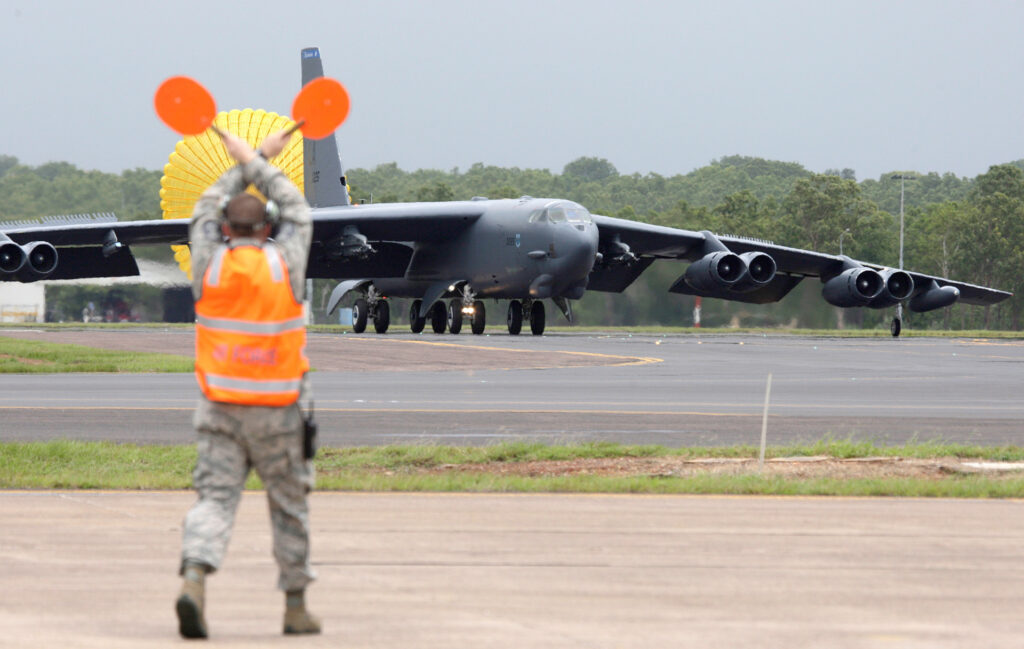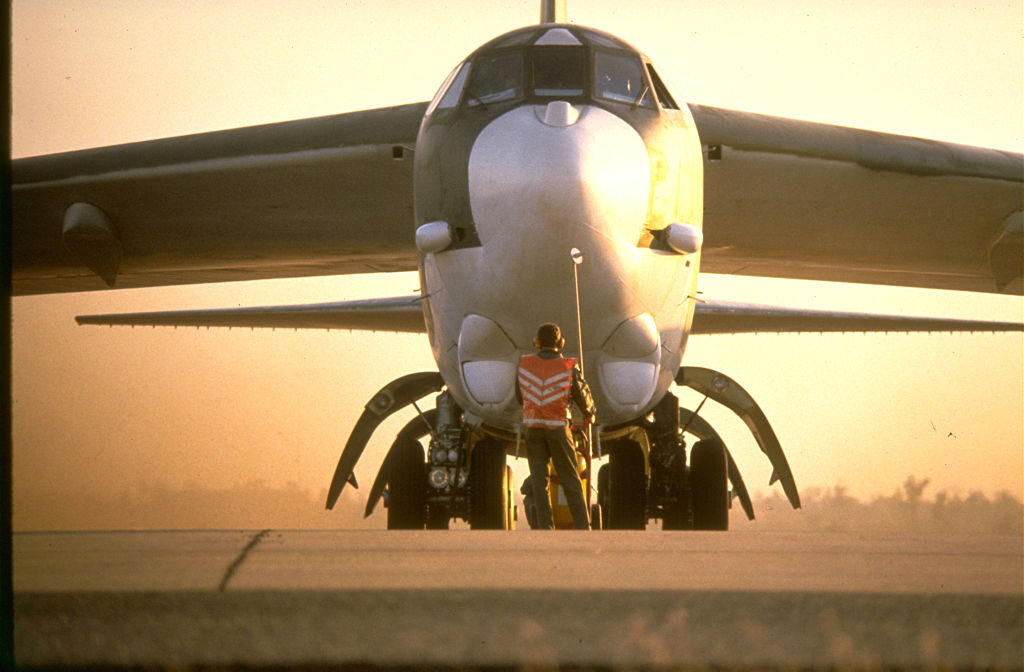The U.S. will deploy up to six nuclear-capable B-52 Stratofortress bombers to a remote Australian airbase in a move experts say is aimed directly at China, a report Monday details.
An investigation by Four Corners, a program hosted by the Australian Broadcasting Corporation (ABC), revealed Washington is planning to build new, dedicated facilities for the giant aircraft at Tindal air base, south of the Northern Territory capital Darwin.
The U.S. has drawn up detailed plans for what it calls a “squadron operations facility” for use during the region’s dry season, an adjoining maintenance centre and a parking area for “six B-52s.”
Becca Wasser from the Centre for New American Security told the outlet putting B-52s in northern Australia is a warning to China, as fears grow Beijing is preparing for an assault on Taiwan.
“Having bombers that could range and potentially attack mainland China could be very important in sending a signal to China that any of its actions over Taiwan could also expand further,” she says.
The bombers are part of a much larger upgrade of defence assets across northern Australia, including a major expansion of the Pine Gap intelligence base, which would play a vital role in any conflict with Beijing.
In July, the U.S. sent four nuclear-capable B-2 Spirit stealth bombers to Amberley air force base near Brisbane, in another deployment that was partly aimed at sending a deterrence message to China.
Another B-2 flew to Amberley in March while Admiral John Aquilino, head of US Indo-Pacific command, was on a week-long visit to the country.
The B-52s have been the backbone of the U.S. Air Force for more than 60 years, with the capability to deliver long-range strikes of both nuclear and conventional weapons.

File/A United States Air Force (USAF) B-52 Stratofortress bomber stationed at Anderson Air Force Base, Guam, lands at Royal Australian Air Force (RAAF) Base Darwin on 28 January 2014. (LAC Terry Hartin/RAAF)

File/A ground crewman prepares a B-52H Stratofortress aircraft for take off during exercise Glad Customer ’82. Darwin, Australia, November 1, 1982. (CORBIS/Corbis via Getty Images)
The U.S. documents seen by the ABC say the facilities will be used for “deployed B-52 squadrons.”
“The ability to deploy U.S. Air Force bombers to Australia sends a strong message to adversaries about our ability to project lethal air power,” the U.S. Air Force told Four Corners.
Asked when the B-52s would begin their deployment at Tindal, Australia’s Department of Defence declined to comment.
Canberra and Washington have been strengthening their long-running security ties in recent years in the face of growing aggression by Beijing in the Indo-Pacific region.
The Financial Times reported last week the U.S. would start a two-year process to remove four dozen ageing F-15 fighter jets stationed in Okinawa. The air force will temporarily replace the jets with more advanced F-22 fighters that will rotate into Okinawa from Alaska.
In September 2021, Australia, the UK and the U.S. announced a new security deal known as AUKUS, which would allow Australia to field a fleet of nuclear submarines by 2040 with the assistance of their partners.
U.S. bomber aircraft have been visiting Australia since the early 1980s and conducting training Down Under with elements of the Royal Australian Air Force (RAAF) since 2005.

COMMENTS
Please let us know if you're having issues with commenting.